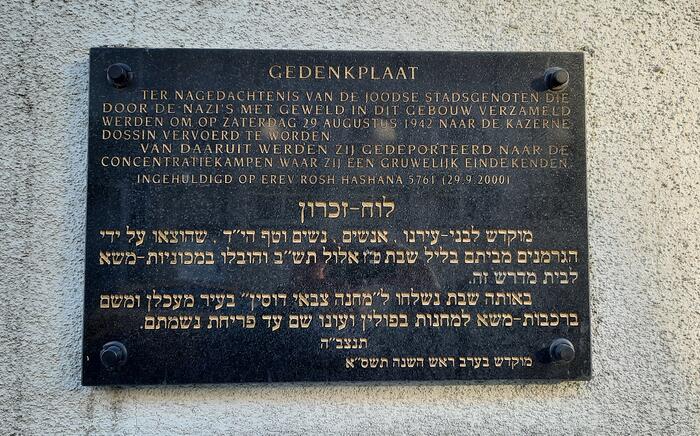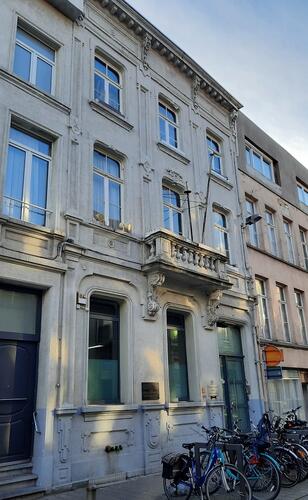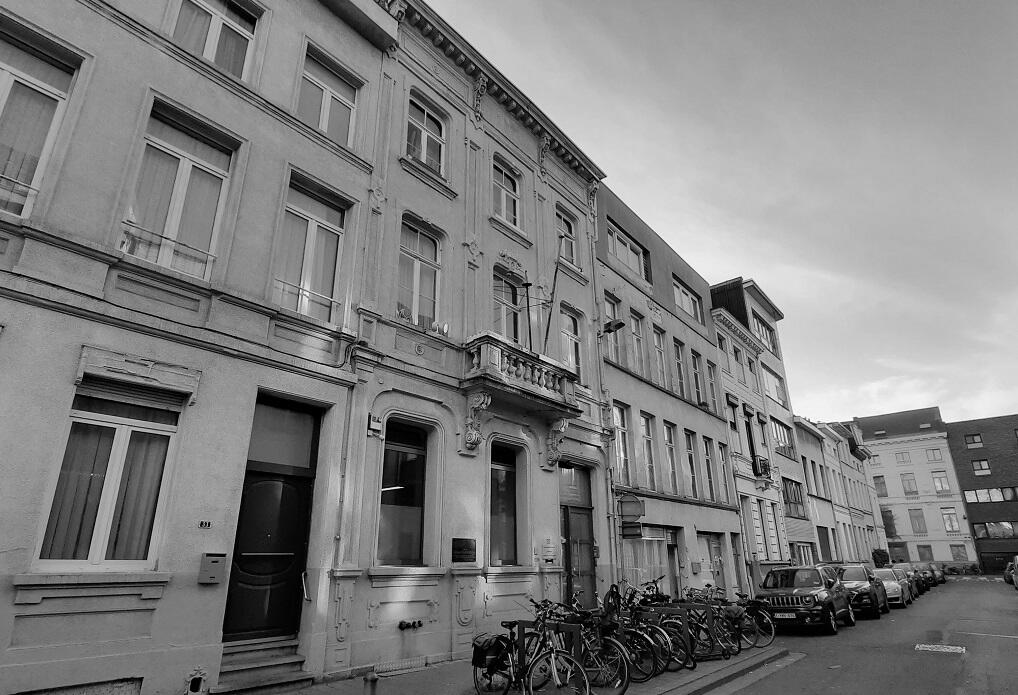Research in the FelixArchive regularly leads to surprising discoveries. In the night of 28 August, 943 Jews were arrested during one of the raids by the German occupying forces in Antwerp. They were brought to various collection points, including in the synagogue in Terliststraat. A hitherto unknown police report provides some insight into how that happened. The discovery was made during an investigation into the involvement of police officers from the district of Deurne in these raids.
The researchers found a report from a police officer among the police reports that were filed by the police of Deurne in 1942. The officer took part in the raid that the Germans carried out with the help of Flemish collaborators and the police of Greater Antwerp on 28 and 29 August 1942. Hundreds of Jews were arrested and transferred to the Dossin Barracks in Mechelen to be sent to the concentration camps. The report was hitherto unknown. It does contain important information, however, in particular about the situation in the synagogue in Terliststraat. This was one of several collection points that the arrested Jews were brought to. Up until know, we had no idea what happened to the Jews in the synagogue. Nor did we know much about police activities in the building.
According to Herman Van Goethem, who described the raid in his book ‘1942. Het jaar van de stilte’ (‘1942. The year of silence’), this is an important discovery: “This is an important testimonial, the first document to refer to the ‘organisation’ in the synagogue.” The report gives a dry account of events between 5:30 am and 8 am. There is no discernible emotion and the police officer has not added any comments about the events that he witnessed.

A plaque on the façade recalls the tragic events that occurred in the synagogue.
Arrests
The report, with reference number PV no. 2187, was submitted to Jozef De Potter, the Chief Commissioner of Antwerp’s police force. It was drawn up on 1 September 1942 by deputy police commissioner Jos Bouhon. He supervised the police officers who collaborated in the raid in Deurne. He also oversaw the group of officers who were sent to Antwerp in the early morning of 29 August to assist with the arrests there. Bouhon reports that the police commissioner of Deurne gave him orders around 5:30 am to take the tram into the city centre with a dozen men. Their orders were to help arrest Jews in the neighbourhood near the Antwerp Zoo. According to Bouhon he “gathered” 39 Jews in Stoomstraat and Van Spangenstraat.
An assistant officer from the sixth district, the neighbourhood where these arrests took place, told him to bring them to the synagogue in Terliststraat. There were several collection points where the arrested Jews were temporarily held, including the municipal school in Grote Hondstraat. Apparently, this did not prevent the synagogue from being very busy when the officers from Deurne arrived with their Jewish captives in tow.

Roll call
“When we got to the synagogue, we realised that one part of the synagogue was already occupied by Jews who had been arrested in other streets and who had been brought there by police officers of the sixth district”, Bouhon writes. These police officers also guarded the Jews that were brought to the synagogue. As there was not enough space in the great hall of the synagogue, Bouhon brought his ‘convoy’ to the ‘room behind the office of the Lord Rabbis’.
In the meantime, Bouhon’s officers had collected the identity cards of the Jews that they had arrested. The deputy commissioner used them for a ‘roll call’. He counted the children separately “to be sure that the head count was correct, as I had to provide this at 8 sharp to the German police authorities, to the Sicherheitspolizei”. They would undergo several other roll calls after this… he then handed over his captives to the police officers of the sixth district after which he returned to Deurne with his men. He did not record the names of the arrested Jews because he assumed that another list would be drawn up in the synagogue. He referred to the method used by the Deurne police force for arresting Jews in Deurne and the fact that they were all brought to Cinema Plaza where they were temporarily held.
The report indicates that the police officers of the sixth district and of the Deurne police force followed German orders to a tee. Bouhon made sure to obey the orders of the German police and of his own superiors. He did this by checking the identity of the Jews he arrested and by carefully counting the children, who often didn’t have identity documents.
On the morning of 29 August, the arrested Jews were taken to the Dossin Barracks in trucks. There, the 943 Jews that were arrested in Antwerp that morning, were registered in anticipation of their deportation.
Read more about the raids and persecution of Jews in Antwerp.

